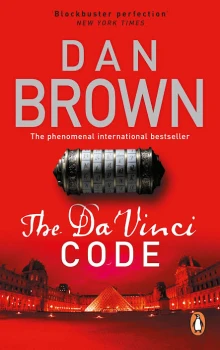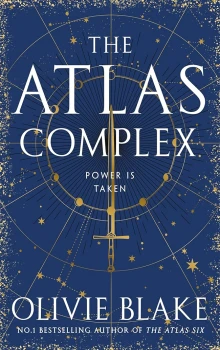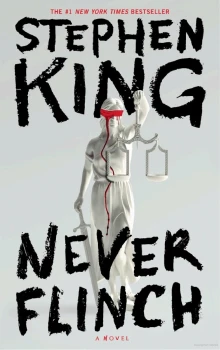Struggling with the gear shift, Langdon managed to maneuver the hijacked taxi to the
far side of the Bois de Boulogne while stalling only twice. Unfortunately, the inherent
humor in the situation was overshadowed by the taxi dispatcher repeatedly hailing their
cab over the radio.
“Voiture cinq-six-trois. Où êtes-vous? Répondez!”
When Langdon reached the exit of the park, he swallowed his machismo and jammed
on the brakes. “You'd better drive.”
Sophie looked relieved as she jumped behind the wheel. Within seconds she had the
car humming smoothly westward along Allée de Longchamp, leaving the Garden of
Earthly Delights behind.
“Which way is Rue Haxo?” Langdon asked, watching Sophie edge the speedometer
over a hundred kilometers an hour.
Sophie's eyes remained focused on the road. “The cab driver said it's adjacent to the
Roland Garros tennis stadium. I know that area.”
Langdon pulled the heavy key from his pocket again, feeling the weight in his palm.
He sensed it was an object of enormous consequence. Quite possibly the key to his own
freedom.
Earlier, while telling Sophie about the Knights Templar, Langdon had realized that this
key, in addition to having the Priory seal embossed on it, possessed a more subtle tie to
the Priory of Sion. The equal-armed cruciform was symbolic of balance and harmony
but also of the Knights Templar. Everyone had seen the paintings of Knights Templar
wearing white tunics emblazoned with red equal-armed crosses. Granted, the arms of the
Templar cross were slightly flared at the ends, but they were still of equal length.
A square cross. Just like the one on this key.
Langdon felt his imagination starting to run wild as he fantasized about what they
might find. The Holy Grail. He almost laughed out loud at the absurdity of it. The Grail
was believed to be somewhere in England, buried in a hidden chamber beneath one of
the many Templar churches, where it had been hidden since at least 1500.
The era of Grand Master Da Vinci.
The Priory, in order to keep their powerful documents safe, had been forced to move
them many times in the early centuries. Historians now suspected as many as six different
Grail relocations since its arrival in Europe from Jerusalem. The last Grail “sighting” had
been in 1447 when numerous eyewitnesses described a fire that had broken out and
almost engulfed the documents before they were carried to safety in four huge chests that
each required six men to carry. After that, nobody claimed to see the Grail ever again. All
that remained were occasional whisperings that it was hidden in Great Britain, the land of
King Arthur and the Knights of the Round Table.
Wherever it was, two important facts remained:
Leonardo knew where the Grail resided during his lifetime.
That hiding place had probably not changed to this day.
For this reason, Grail enthusiasts still pored over Da Vinci's art and diaries in hopes of
unearthing a hidden clue as to the Grail's current location. Some claimed the mountainous
backdrop in Madonna of the Rocks matched the topography of a series of cave-ridden
hills in Scotland. Others insisted that the suspicious placement of disciples in The Last
Supper was some kind of code. Still others claimed that X rays of the Mona Lisa
revealed she originally had been painted wearing a lapis lazuli pendant of Isis—a detail
Da Vinci purportedly later decided to paint over. Langdon had never seen any evidence
of the pendant, nor could he imagine how it could possibly reveal the Holy Grail, and yet
Grail aficionados still discussed it ad nauseum on Internet bulletin boards and worldwide-
web chat rooms.
Everyone loves a conspiracy.
And the conspiracies kept coming. Most recently, of course, had been the earthshaking
discovery that Da Vinci's famed Adoration of the Magi was hiding a dark secret beneath
its layers of paint. Italian art diagnostician Maurizio Seracini had unveiled the unsettling
truth, which the New York Times Magazine carried prominently in a story titled “The
Leonardo Cover-Up.”
Seracini had revealed beyond any doubt that while the Adoration's gray-green
sketched underdrawing was indeed Da Vinci's work, the painting itself was not. The truth
was that some anonymous painter had filled in Da Vinci's sketch like a paint-by-numbers
years after Da Vinci's death. Far more troubling, however, was what lay beneath the
impostor's paint. Photographs taken with infrared reflectography and X ray suggested
that this rogue painter, while filling in Da Vinci's sketched study, had made suspicious
departures from the underdrawing . . . as if to subvert Da Vinci's true intention. Whatever
the true nature of the underdrawing, it had yet to be made public. Even so, embarrassed
officials at Florence's Uffizi Gallery immediately banished the painting to a warehouse
across the street. Visitors at the gallery's Leonardo Room now found a misleading and
unapologetic plaque where the Adoration once hung.
THIS WORK IS UNDERGOING
DIAGNOSTIC TESTS IN PREPARATION
FOR RESTORATION.
In the bizarre underworld of modern Grail seekers, Leonardo da Vinci remained the
quest's great enigma. His artwork seemed bursting to tell a secret, and yet whatever it was
remained hidden, perhaps beneath a layer of paint, perhaps enciphered in plain view, or
perhaps nowhere at all. Maybe Da Vinci's plethora of tantalizing clues was nothing but an
empty promise left behind to frustrate the curious and bring a smirk to the face of his
knowing Mona Lisa.
“Is it possible,” Sophie asked, drawing Langdon back, “that the key you're holding
unlocks the hiding place of the Holy Grail?”
Langdon's laugh sounded forced, even to him. “I really can't imagine. Besides, the
Grail is believed to be hidden in the United Kingdom somewhere, not France.” He gave
her the quick history.
“But the Grail seems the only rational conclusion,” she insisted. “We have an
extremely secure key, stamped with the Priory of Sion seal, delivered to us by a member
of the Priory of Sion—a brotherhood which, you just told me, are guardians of the Holy
Grail.”
Langdon knew her contention was logical, and yet intuitively he could not possibly
accept it. Rumors existed that the Priory had vowed someday to bring the Grail back to
France to a final resting place, but certainly no historical evidence existed to suggest that
this indeed had happened. Even if the Priory had managed to bring the Grail back to
France, the address 24 Rue Haxo near a tennis stadium hardly sounded like a noble final
resting place. “Sophie, I really don't see how this key could have anything to do with the
Grail.”
“Because the Grail is supposed to be in England?”
“Not only that. The location of the Holy Grail is one of the best kept secrets in history.
Priory members wait decades proving themselves trustworthy before being elevated to
the highest echelons of the fraternity and learning where the Grail is. That secret is
protected by an intricate system of compartmentalized knowledge, and although the
Priory brotherhood is very large, only four members at any given time know where the
Grail is hidden—the Grand Master and his three sénéchaux. The probability of your
grandfather being one of those four top people is very slim.”
My grandfather was one of them, Sophie thought, pressing down on the accelerator.
She had an image stamped in her memory that confirmed her grandfather's status within
the brotherhood beyond any doubt.
“And even if your grandfather were in the upper echelon, he would never be allowed
to reveal anything to anyone outside the brotherhood. It is inconceivable that he would
bring you into the inner circle.”
I've already been there, Sophie thought, picturing the ritual in the basement. She
wondered if this were the moment to tell Langdon what she had witnessed that night in
the Normandy château. For ten years now, simple shame had kept her from telling a soul.
Just thinking about it, she shuddered. Sirens howled somewhere in the distance, and she
felt a thickening shroud of fatigue settling over her.
“There!” Langdon said, feeling excited to see the huge complex of the Roland Garros
tennis stadium looming ahead.
Sophie snaked her way toward the stadium. After several passes, they located the
intersection of Rue Haxo and turned onto it, driving in the direction of the lower
numbers. The road became more industrial, lined with businesses.
We need number twenty-four, Langdon told himself, realizing he was secretly scanning
the horizon for the spires of a church. Don't be ridiculous. A forgotten Templar church in
this neighborhood?
“There it is,” Sophie exclaimed, pointing.
Langdon's eyes followed to the structure ahead.
What in the world?
The building was modern. A squat citadel with a giant, neon equal-armed cross
emblazoned atop its facade. Beneath the cross were the words:
DEPOSITORY BANK OF ZURICH
Langdon was thankful not to have shared his Templar church hopes with Sophie. A
career hazard of symbologists was a tendency to extract hidden meaning from situations
that had none. In this case, Langdon had entirely forgotten that the peaceful, equal-armed
cross had been adopted as the perfect symbol for the flag of neutral Switzerland.
At least the mystery was solved.
Sophie and Langdon were holding the key to a Swiss bank deposit box.






